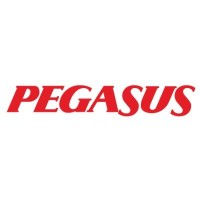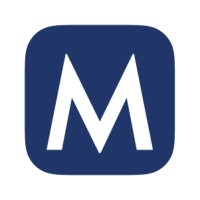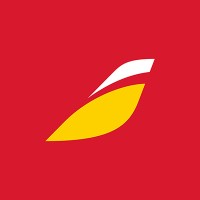
Pegasus Airlines Company Cyber Security Posture
flypgs.comPegasus Airlines, purchased by Esas Group in January 2005, is a leading low-cost airline in Türkiye, which provides reasonably priced transportation opportunities on point-to-point basis in short and medium range routes and aims to set up a wide flight network with high flight frequency for guests. After being acquired on 2005 by Esas Holding A.S. owned by Sevket Sabanci and his family, Pegasus Airlines started scheduled domestic flights in November of 2005 and became the 4th top among the scheduled airlines operating in Türkiye. We’re the most rapidly growing airline in Europe... Holding the belief that “everybody has the right to fly”, Pegasus Airlines brought “low-cost model” to life in Türkiye soon after starting scheduled flights. With an average age of 4.4 years, Pegasus Airlines has the youngest fleet in Türkiye and still continues to introduce reasonably priced airline transportation services in keeping with this aim. With its fleet composed of 111 airplanes in total by August 2024, Pegasus extended its flight network, which was initially composed of 7 domestic locations at the beginning of scheduled flights, up to 139 locations and currently has 104 international and 35 domestic flight locations in 53 countries. Pegasus Airlines’ goal is to transform flying from a luxury into something that forms part of people’s everyday lives while providing economic, safe and punctual travel opportunities to its guests both in Türkiye and globally through technological and flight safety investments.
Pegasus Airlines Company Details
pegasus-airlines
6374 employees
342570.0
481
Airlines and Aviation
flypgs.com
Scan still pending
PEG_1759733
In-progress
Between 900 and 1000
This score is AI-generated and less favored by cyber insurers, who prefer the TPRM score.
 Pegasus Airlines Global Score
Pegasus Airlines Global Score.png)

Pegasus Airlines Company Scoring based on AI Models
| Model Name | Date | Description | Current Score Difference | Score |
|---|---|---|---|---|
| AVERAGE-Industry | 03-12-2025 | This score represents the average cybersecurity rating of companies already scanned within the same industry. It provides a benchmark to compare an individual company's security posture against its industry peers. | N/A | Between 900 and 1000 |
Pegasus Airlines Company Cyber Security News & History
| Entity | Type | Severity | Impact | Seen | Url ID | Details | View |
|---|---|---|---|---|---|---|---|
| Pegasus Airlines | Breach | 100 | 5 | 06/2022 | PEG11417622 | Link | |
Rankiteo Explanation : Attack threatening the organization's existenceDescription: Turkish flight operator Pegasus Airlines suffered a data breach after an AWS cloud storage bucket was left unprotected. Electronic Flight Bag (EFB) information including the names, surnames, phone numbers, e-mail addresses, titles, flight information of past journeys, flight locations, and photographs and signature images of some employees belonging to an unknown number of customers was stored in an open bucket. Reportedly around 23 million files, totaling around 6.5 TB of data were found on the bucket. The bucket also exposed the EFB software’s source code, which contained plain-text passwords and secret keys. | |||||||
Pegasus Airlines Company Subsidiaries

Pegasus Airlines, purchased by Esas Group in January 2005, is a leading low-cost airline in Türkiye, which provides reasonably priced transportation opportunities on point-to-point basis in short and medium range routes and aims to set up a wide flight network with high flight frequency for guests. After being acquired on 2005 by Esas Holding A.S. owned by Sevket Sabanci and his family, Pegasus Airlines started scheduled domestic flights in November of 2005 and became the 4th top among the scheduled airlines operating in Türkiye. We’re the most rapidly growing airline in Europe... Holding the belief that “everybody has the right to fly”, Pegasus Airlines brought “low-cost model” to life in Türkiye soon after starting scheduled flights. With an average age of 4.4 years, Pegasus Airlines has the youngest fleet in Türkiye and still continues to introduce reasonably priced airline transportation services in keeping with this aim. With its fleet composed of 111 airplanes in total by August 2024, Pegasus extended its flight network, which was initially composed of 7 domestic locations at the beginning of scheduled flights, up to 139 locations and currently has 104 international and 35 domestic flight locations in 53 countries. Pegasus Airlines’ goal is to transform flying from a luxury into something that forms part of people’s everyday lives while providing economic, safe and punctual travel opportunities to its guests both in Türkiye and globally through technological and flight safety investments.
Access Data Using Our API

Get company history
.png)
Pegasus Airlines Cyber Security News
Pegasus Airlines Orders Up to 200 Boeing 737-10 Airplanes
Pegasus Airlines launched operations with the Boeing 737 Classic nearly 35 years ago. The 737-10 will complement the airline's fleet of Next- ...
Pegasus airline data breach: 6.5TB of info leaked online
A vulnerability in software developed by Turkish airline Pegasus has left 6.5 terabytes of data exposed online.
Boeing re-captures Turkish airline Pegasus with MAX jet order
Boeing (BA.N) has secured a firm order from Turkish low-cost carrier Pegasus Airlines (PGSUS.IS) for a hundred 737 MAX 10 jetliners.
Pegasus Airlines Receives World’s 2nd Youngest Aircraft Fleet Award 2025
Pegasus Airlines has received the World's 2nd Youngest Aircraft Fleet Award 2025 in the '100+ aircraft in their fleet' category by ch-aviation.
Meet UCF’s 2025 Pegasus Professors
Fevzi Okumus is passionate about teaching, research and working with industry partners. He teaches and works on research in the areas of ...
What Is DSPM, How Does It Work, and How To Implement It?
Learn data security posture management, how it works, and how you can use it to protect your data, mitigate risks, and enforce compliance ...
Pegasus (spyware)
Pegasus (spyware), spyware developed by Israeli cyber-intelligence firm NSO Group (founded in 2010) for eavesdropping on mobile phones and ...
Breach at Turkey's Pegasus Airlines Exposes 6.5TB of Data
A data breach at Turkish firm Pegasus Airlines has put more than 6.5TB of sensitive electronic flight bag data at risk.
Turkish Airlines, Pegasus halt flights to Iran until November 1
ANKARA: Turkish-owned carriers Turkish Airlines and Pegasus have suspended flights to Iran until November 1, local media said on Wednesday, as ...

Pegasus Airlines Similar Companies

Menzies Aviation
People. Passion. Pride. These have driven our team since 1833. Since that time, we have developed to become a critical partner in the global aviation industry, delivering time-critical logistics services at over 300 locations in 65 countries, across six continents. But at the heart of our

Indian Airlines Limited
Indian Airlines Ltd has been merged with Air India Ltd. The consolidated company is named as National Aviation Company of India Ltd. It operates under the marketing name of Air India. As of now the Airline operates under both AI as well as IC code. Air India has a subsidiary Low cost carrier Air Ind

Iberia
Iberia is Spain’s number-one airline group and the leader in the Europe-Latin America market, with the single greatest array of destinations and flight frequencies. Together with British Airways, we’re part of the IAG Group, with the third-highest receipts in Europe and sixth worldwide.. Iberia is a

SAUDI AIRLINES
At Saudia Group, we're on a mission to inspire people to go beyond borders. Our purpose is rooted in unlocking human potential and connecting the world in ways never thought possible. We are committed to reshaping the aviation ecosystem in our region and beyond, by embracing innovation and a custome

Air Canada
Canada's largest airline, the country’s flag carrier and a founding member of Star Alliance, the world's most comprehensive air transportation network celebrating its 25thanniversary in 2022, Air Canada provides scheduled passenger service directly to 51 airports in Canada, 51 in the United States a

Etihad
Marhaba! Welcome to Etihad Airways. We are proud to be the national airline of the UAE, flying to Abu Dhabi or onwards to over 70 global destinations. Our passion is to help people reach unmissable places, where they’ll make unforgettable memories. Our aim is to provide our passengers with unbeata

Frequently Asked Questions (FAQ) on Cybersecurity Incidents
Pegasus Airlines CyberSecurity History Information
Total Incidents: According to Rankiteo, Pegasus Airlines has faced 1 incidents in the past.
Incident Types: The types of cybersecurity incidents that have occurred include ['Breach'].
Total Financial Loss: The total financial loss from these incidents is estimated to be {total_financial_loss}.
Cybersecurity Posture: The company's overall cybersecurity posture is described as Pegasus Airlines, purchased by Esas Group in January 2005, is a leading low-cost airline in Türkiye, which provides reasonably priced transportation opportunities on point-to-point basis in short and medium range routes and aims to set up a wide flight network with high flight frequency for guests. After being acquired on 2005 by Esas Holding A.S. owned by Sevket Sabanci and his family, Pegasus Airlines started scheduled domestic flights in November of 2005 and became the 4th top among the scheduled airlines operating in Türkiye. We’re the most rapidly growing airline in Europe... Holding the belief that “everybody has the right to fly”, Pegasus Airlines brought “low-cost model” to life in Türkiye soon after starting scheduled flights. With an average age of 4.4 years, Pegasus Airlines has the youngest fleet in Türkiye and still continues to introduce reasonably priced airline transportation services in keeping with this aim. With its fleet composed of 111 airplanes in total by August 2024, Pegasus extended its flight network, which was initially composed of 7 domestic locations at the beginning of scheduled flights, up to 139 locations and currently has 104 international and 35 domestic flight locations in 53 countries. Pegasus Airlines’ goal is to transform flying from a luxury into something that forms part of people’s everyday lives while providing economic, safe and punctual travel opportunities to its guests both in Türkiye and globally through technological and flight safety investments..
Detection and Response: The company detects and responds to cybersecurity incidents through {description_of_detection_and_response_process}.
Incident Details
Incident 1: Ransomware Attack
Title: {Incident_Title}
Description: {Brief_description_of_the_incident}
Date Detected: {Detection_Date}
Date Publicly Disclosed: {Disclosure_Date}
Date Resolved: {Resolution_Date}
Type: {Type_of_Attack}
Attack Vector: {Attack_Vector}
Vulnerability Exploited: {Vulnerability}
Threat Actor: {Threat_Actor}
Motivation: {Motivation}
Incident 2: Data Breach
Title: {Incident_Title}
Description: {Brief_description_of_the_incident}
Date Detected: {Detection_Date}
Date Publicly Disclosed: {Disclosure_Date}
Date Resolved: {Resolution_Date}
Type: {Type_of_Attack}
Attack Vector: {Attack_Vector}
Vulnerability Exploited: {Vulnerability}
Threat Actor: {Threat_Actor}
Motivation: {Motivation}
Common Attack Types: As of now, the company has not encountered any reported incidents involving common cyberattacks.
Identification of Attack Vectors: The company identifies the attack vectors used in incidents through {description_of_identification_process}.
Impact of the Incidents
Incident 1: Ransomware Attack
Financial Loss: {Financial_Loss}
Data Compromised: {Data_Compromised}
Systems Affected: {Systems_Affected}
Downtime: {Downtime}
Operational Impact: {Operational_Impact}
Conversion Rate Impact: {Conversion_Rate_Impact}
Revenue Loss: {Revenue_Loss}
Customer Complaints: {Customer_Complaints}
Brand Reputation Impact: {Brand_Reputation_Impact}
Legal Liabilities: {Legal_Liabilities}
Identity Theft Risk: {Identity_Theft_Risk}
Payment Information Risk: {Payment_Information_Risk}
Incident 2: Data Breach
Financial Loss: {Financial_Loss}
Data Compromised: {Data_Compromised}
Systems Affected: {Systems_Affected}
Downtime: {Downtime}
Operational Impact: {Operational_Impact}
Conversion Rate Impact: {Conversion_Rate_Impact}
Revenue Loss: {Revenue_Loss}
Customer Complaints: {Customer_Complaints}
Brand Reputation Impact: {Brand_Reputation_Impact}
Legal Liabilities: {Legal_Liabilities}
Identity Theft Risk: {Identity_Theft_Risk}
Payment Information Risk: {Payment_Information_Risk}
Average Financial Loss: The average financial loss per incident is {average_financial_loss}.
Commonly Compromised Data Types: The types of data most commonly compromised in incidents are {list_of_commonly_compromised_data_types}.
Incident 1: Ransomware Attack
Entity Name: {Entity_Name}
Entity Type: {Entity_Type}
Industry: {Industry}
Location: {Location}
Size: {Size}
Customers Affected: {Customers_Affected}
Incident 2: Data Breach
Entity Name: {Entity_Name}
Entity Type: {Entity_Type}
Industry: {Industry}
Location: {Location}
Size: {Size}
Customers Affected: {Customers_Affected}
Response to the Incidents
Incident 1: Ransomware Attack
Incident Response Plan Activated: {Yes/No}
Third Party Assistance: {Yes/No}
Law Enforcement Notified: {Yes/No}
Containment Measures: {Containment_Measures}
Remediation Measures: {Remediation_Measures}
Recovery Measures: {Recovery_Measures}
Communication Strategy: {Communication_Strategy}
Adaptive Behavioral WAF: {Adaptive_Behavioral_WAF}
On-Demand Scrubbing Services: {On_Demand_Scrubbing_Services}
Network Segmentation: {Network_Segmentation}
Enhanced Monitoring: {Enhanced_Monitoring}
Incident 2: Data Breach
Incident Response Plan Activated: {Yes/No}
Third Party Assistance: {Yes/No}
Law Enforcement Notified: {Yes/No}
Containment Measures: {Containment_Measures}
Remediation Measures: {Remediation_Measures}
Recovery Measures: {Recovery_Measures}
Communication Strategy: {Communication_Strategy}
Adaptive Behavioral WAF: {Adaptive_Behavioral_WAF}
On-Demand Scrubbing Services: {On_Demand_Scrubbing_Services}
Network Segmentation: {Network_Segmentation}
Enhanced Monitoring: {Enhanced_Monitoring}
Incident Response Plan: The company's incident response plan is described as {description_of_incident_response_plan}.
Third-Party Assistance: The company involves third-party assistance in incident response through {description_of_third_party_involvement}.
Data Breach Information
Incident 2: Data Breach
Type of Data Compromised: {Type_of_Data}
Number of Records Exposed: {Number_of_Records}
Sensitivity of Data: {Sensitivity_of_Data}
Data Exfiltration: {Yes/No}
Data Encryption: {Yes/No}
File Types Exposed: {File_Types}
Personally Identifiable Information: {Yes/No}
Prevention of Data Exfiltration: The company takes the following measures to prevent data exfiltration: {description_of_prevention_measures}.
Handling of PII Incidents: The company handles incidents involving personally identifiable information (PII) through {description_of_handling_process}.
Ransomware Information
Incident 1: Ransomware Attack
Ransom Demanded: {Ransom_Amount}
Ransom Paid: {Ransom_Paid}
Ransomware Strain: {Ransomware_Strain}
Data Encryption: {Yes/No}
Data Exfiltration: {Yes/No}
Ransom Payment Policy: The company's policy on paying ransoms in ransomware incidents is described as {description_of_ransom_payment_policy}.
Data Recovery from Ransomware: The company recovers data encrypted by ransomware through {description_of_data_recovery_process}.
Regulatory Compliance
Incident 1: Ransomware Attack
Regulations Violated: {Regulations_Violated}
Fines Imposed: {Fines_Imposed}
Legal Actions: {Legal_Actions}
Regulatory Notifications: {Regulatory_Notifications}
Incident 2: Data Breach
Regulations Violated: {Regulations_Violated}
Fines Imposed: {Fines_Imposed}
Legal Actions: {Legal_Actions}
Regulatory Notifications: {Regulatory_Notifications}
Regulatory Frameworks: The company complies with the following regulatory frameworks regarding cybersecurity: {list_of_regulatory_frameworks}.
Ensuring Regulatory Compliance: The company ensures compliance with regulatory requirements through {description_of_compliance_measures}.
Lessons Learned and Recommendations
Incident 1: Ransomware Attack
Lessons Learned: {Lessons_Learned}
Incident 2: Data Breach
Lessons Learned: {Lessons_Learned}
Incident 1: Ransomware Attack
Recommendations: {Recommendations}
Incident 2: Data Breach
Recommendations: {Recommendations}
Key Lessons Learned: The key lessons learned from past incidents are {list_of_key_lessons_learned}.
Implemented Recommendations: The company has implemented the following recommendations to improve cybersecurity: {list_of_implemented_recommendations}.
References
Additional Resources: Stakeholders can find additional resources on cybersecurity best practices at {list_of_additional_resources}.
Investigation Status
Incident 1: Ransomware Attack
Investigation Status: {Investigation_Status}
Incident 2: Data Breach
Investigation Status: {Investigation_Status}
Communication of Investigation Status: The company communicates the status of incident investigations to stakeholders through {description_of_communication_process}.
Stakeholder and Customer Advisories
Incident 1: Ransomware Attack
Stakeholder Advisories: {Stakeholder_Advisories}
Customer Advisories: {Customer_Advisories}
Incident 2: Data Breach
Stakeholder Advisories: {Stakeholder_Advisories}
Customer Advisories: {Customer_Advisories}
Advisories Provided: The company provides the following advisories to stakeholders and customers following an incident: {description_of_advisories_provided}.
Initial Access Broker
Incident 1: Ransomware Attack
Entry Point: {Entry_Point}
Reconnaissance Period: {Reconnaissance_Period}
Backdoors Established: {Backdoors_Established}
High Value Targets: {High_Value_Targets}
Data Sold on Dark Web: {Yes/No}
Incident 2: Data Breach
Entry Point: {Entry_Point}
Reconnaissance Period: {Reconnaissance_Period}
Backdoors Established: {Backdoors_Established}
High Value Targets: {High_Value_Targets}
Data Sold on Dark Web: {Yes/No}
Monitoring and Mitigation of Initial Access Brokers: The company monitors and mitigates the activities of initial access brokers through {description_of_monitoring_and_mitigation_measures}.
Post-Incident Analysis
Incident 1: Ransomware Attack
Root Causes: {Root_Causes}
Corrective Actions: {Corrective_Actions}
Incident 2: Data Breach
Root Causes: {Root_Causes}
Corrective Actions: {Corrective_Actions}
Post-Incident Analysis Process: The company's process for conducting post-incident analysis is described as {description_of_post_incident_analysis_process}.
Corrective Actions Taken: The company has taken the following corrective actions based on post-incident analysis: {list_of_corrective_actions_taken}.
Additional Questions
General Information
Ransom Payment History: The company has {paid/not_paid} ransoms in the past.
Last Ransom Demanded: The amount of the last ransom demanded was {last_ransom_amount}.
Last Attacking Group: The attacking group in the last incident was {last_attacking_group}.
Incident Details
Most Recent Incident Detected: The most recent incident detected was on {most_recent_incident_detected_date}.
Most Recent Incident Publicly Disclosed: The most recent incident publicly disclosed was on {most_recent_incident_publicly_disclosed_date}.
Most Recent Incident Resolved: The most recent incident resolved was on {most_recent_incident_resolved_date}.
Impact of the Incidents
Highest Financial Loss: The highest financial loss from an incident was {highest_financial_loss}.
Most Significant Data Compromised: The most significant data compromised in an incident was {most_significant_data_compromised}.
Most Significant System Affected: The most significant system affected in an incident was {most_significant_system_affected}.
Response to the Incidents
Third-Party Assistance in Most Recent Incident: The third-party assistance involved in the most recent incident was {third_party_assistance_in_most_recent_incident}.
Containment Measures in Most Recent Incident: The containment measures taken in the most recent incident were {containment_measures_in_most_recent_incident}.
Data Breach Information
Most Sensitive Data Compromised: The most sensitive data compromised in a breach was {most_sensitive_data_compromised}.
Number of Records Exposed: The number of records exposed in the most significant breach was {number_of_records_exposed}.
Ransomware Information
Highest Ransom Demanded: The highest ransom demanded in a ransomware incident was {highest_ransom_demanded}.
Highest Ransom Paid: The highest ransom paid in a ransomware incident was {highest_ransom_paid}.
Regulatory Compliance
Highest Fine Imposed: The highest fine imposed for a regulatory violation was {highest_fine_imposed}.
Most Significant Legal Action: The most significant legal action taken for a regulatory violation was {most_significant_legal_action}.
Lessons Learned and Recommendations
Most Significant Lesson Learned: The most significant lesson learned from past incidents was {most_significant_lesson_learned}.
Most Significant Recommendation Implemented: The most significant recommendation implemented to improve cybersecurity was {most_significant_recommendation_implemented}.
References
Most Recent Source: The most recent source of information about an incident is {most_recent_source}.
Most Recent URL for Additional Resources: The most recent URL for additional resources on cybersecurity best practices is {most_recent_url}.
Investigation Status
Current Status of Most Recent Investigation: The current status of the most recent investigation is {current_status_of_most_recent_investigation}.
Stakeholder and Customer Advisories
Most Recent Stakeholder Advisory: The most recent stakeholder advisory issued was {most_recent_stakeholder_advisory}.
Most Recent Customer Advisory: The most recent customer advisory issued was {most_recent_customer_advisory}.
Initial Access Broker
Most Recent Entry Point: The most recent entry point used by an initial access broker was {most_recent_entry_point}.
Most Recent Reconnaissance Period: The most recent reconnaissance period for an incident was {most_recent_reconnaissance_period}.
Post-Incident Analysis
Most Significant Root Cause: The most significant root cause identified in post-incident analysis was {most_significant_root_cause}.
Most Significant Corrective Action: The most significant corrective action taken based on post-incident analysis was {most_significant_corrective_action}.
What Do We Measure?
















Every week, Rankiteo analyzes billions of signals to give organizations a sharper, faster view of emerging risks. With deeper, more actionable intelligence at their fingertips, security teams can outpace threat actors, respond instantly to Zero-Day attacks, and dramatically shrink their risk exposure window.
These are some of the factors we use to calculate the overall score:
Identify exposed access points, detect misconfigured SSL certificates, and uncover vulnerabilities across the network infrastructure.
Gain visibility into the software components used within an organization to detect vulnerabilities, manage risk, and ensure supply chain security.
Monitor and manage all IT assets and their configurations to ensure accurate, real-time visibility across the company's technology environment.
Leverage real-time insights on active threats, malware campaigns, and emerging vulnerabilities to proactively defend against evolving cyberattacks.




